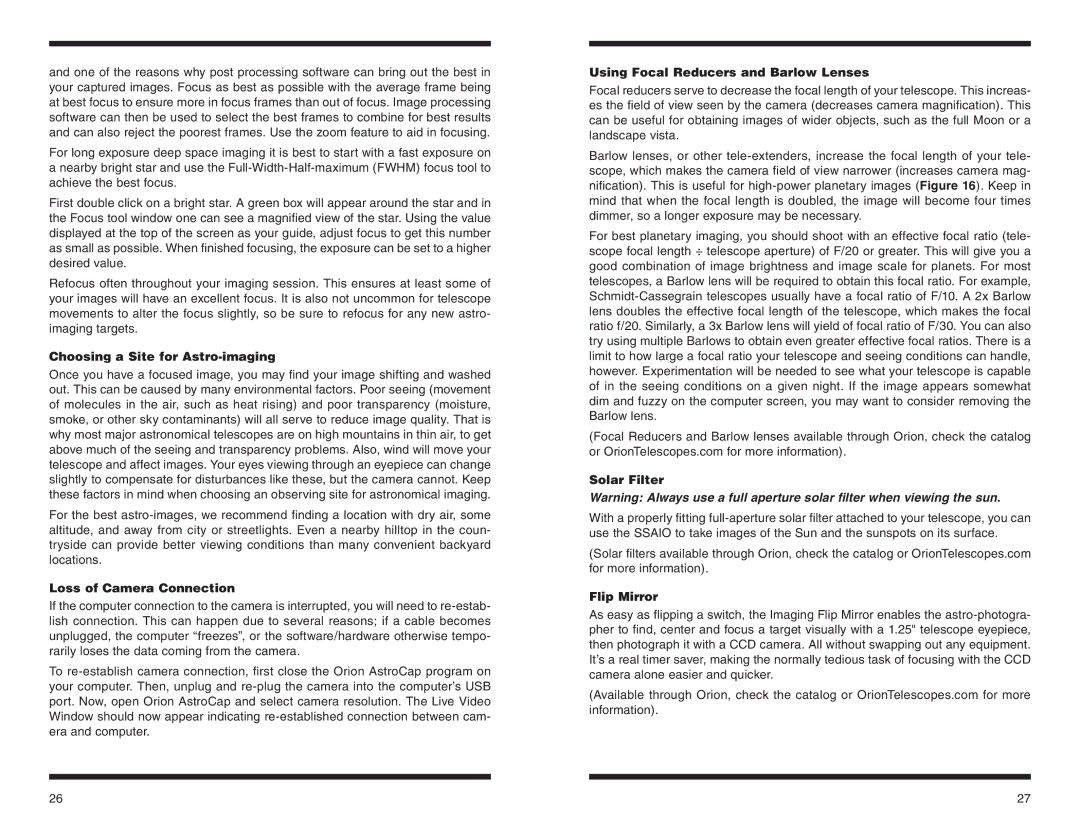
and one of the reasons why post processing software can bring out the best in your captured images. Focus as best as possible with the average frame being at best focus to ensure more in focus frames than out of focus. Image processing software can then be used to select the best frames to combine for best results and can also reject the poorest frames. Use the zoom feature to aid in focusing.
For long exposure deep space imaging it is best to start with a fast exposure on
anearby bright star and use the
First double click on a bright star. A green box will appear around the star and in the Focus tool window one can see a magnified view of the star. Using the value displayed at the top of the screen as your guide, adjust focus to get this number as small as possible. When finished focusing, the exposure can be set to a higher desired value.
Refocus often throughout your imaging session. This ensures at least some of your images will have an excellent focus. It is also not uncommon for telescope movements to alter the focus slightly, so be sure to refocus for any new astro- imaging targets.
Choosing a Site for Astro-imaging
Once you have a focused image, you may find your image shifting and washed out. This can be caused by many environmental factors. Poor seeing (movement of molecules in the air, such as heat rising) and poor transparency (moisture, smoke, or other sky contaminants) will all serve to reduce image quality. That is why most major astronomical telescopes are on high mountains in thin air, to get above much of the seeing and transparency problems. Also, wind will move your telescope and affect images. Your eyes viewing through an eyepiece can change slightly to compensate for disturbances like these, but the camera cannot. Keep these factors in mind when choosing an observing site for astronomical imaging.
For the best
Loss of Camera Connection
If the computer connection to the camera is interrupted, you will need to
To
Using Focal Reducers and Barlow Lenses
Focal reducers serve to decrease the focal length of your telescope. This increas- es the field of view seen by the camera (decreases camera magnification). This can be useful for obtaining images of wider objects, such as the full Moon or a landscape vista.
Barlow lenses, or other
For best planetary imaging, you should shoot with an effective focal ratio (tele- scope focal length ÷ telescope aperture) of F/20 or greater. This will give you a good combination of image brightness and image scale for planets. For most telescopes, a Barlow lens will be required to obtain this focal ratio. For example,
(Focal Reducers and Barlow lenses available through Orion, check the catalog or OrionTelescopes.com for more information).
Solar Filter
Warning: Always use a full aperture solar filter when viewing the sun.
With a properly fitting
(Solar filters available through Orion, check the catalog or OrionTelescopes.com for more information).
Flip Mirror
As easy as flipping a switch, the Imaging Flip Mirror enables the
(Available through Orion, check the catalog or OrionTelescopes.com for more information).
26 | 27 |
